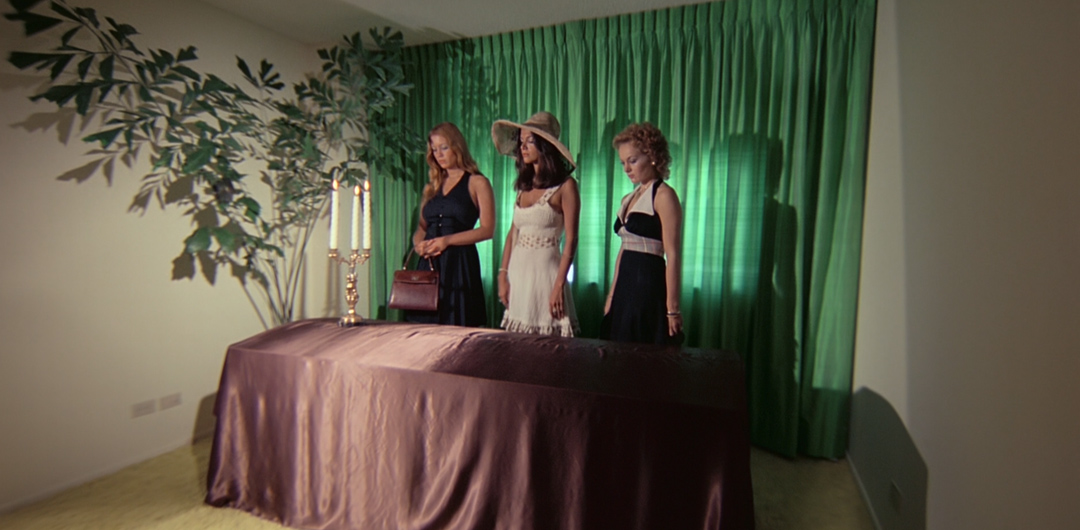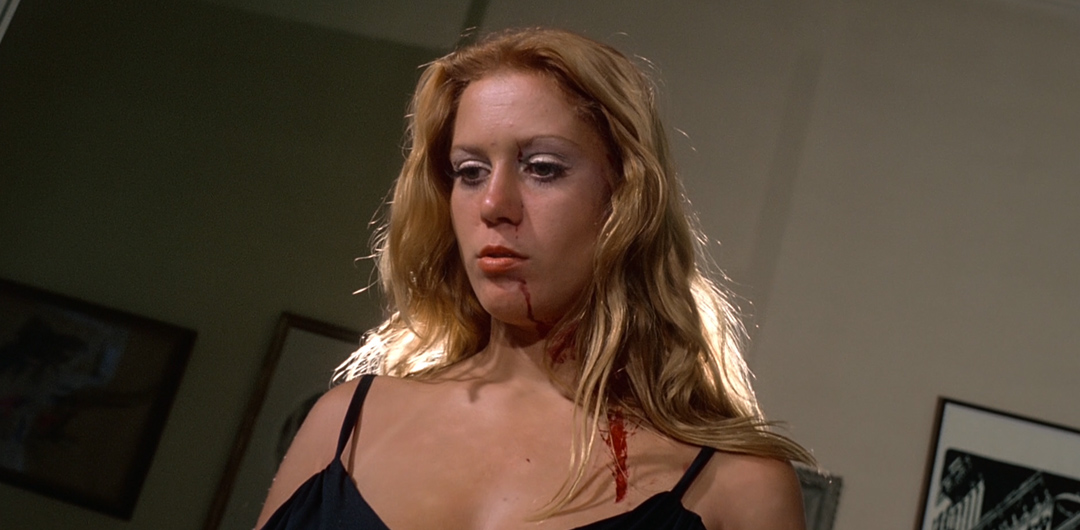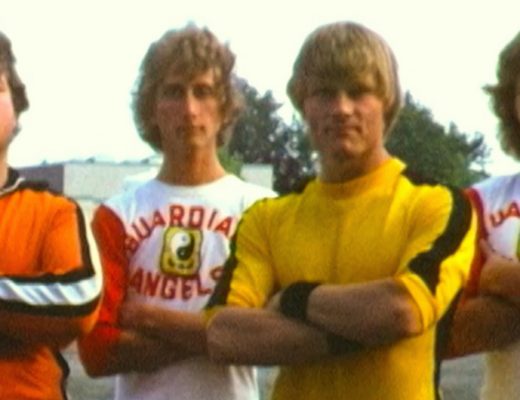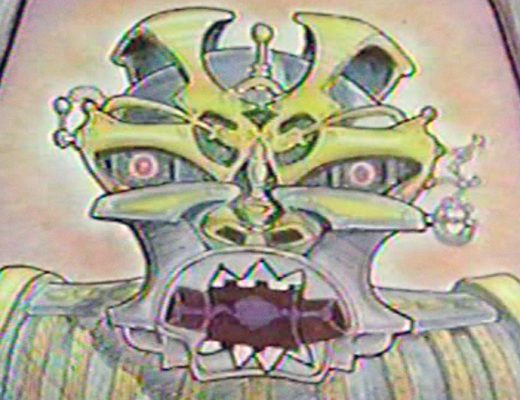Chesty Morgan is dead. Long live Chesty Morgan.
Green velvet curtains and exactly one fake potted plant adorn the world’s tiniest funeral parlor. In the center of the room, purple drapery cloaks a coffee table. Minutes later, we understand that this coffee table is, ostensibly, a coffin. A very exceptional coffin. One that holds the body of Chesty Morgan aka Double Agent 73 aka My God Is This Really Happening?
The Immoral Three is the culmination of a dream that I’ve never had, but wish I’d had a thousand times — a Doris Wishman film that also happens to be a direct sequel to a Doris Wishman film, complete with recreated mythology, topical tangents, and a dick-flopping fistfight. To someone unfamiliar with Doris’ atypical cinematic processes, and in particular Double Agent 73, this fact means very little. But to the people who embrace the notion that Doris’ ramifications as an exceptionally unique filmmaker are just as fascinating and rewarding as those of John Cassavetes or Shirley Clarke, it’s a gift. A gift that includes Keystone Cops piano rolls, slide whistles, and Love Boat outtakes. A gift that equates static shots of telephones with emotional consequence. A gift that presents gaudy living rooms as majestic valhallas.
A gift that is unconditionally Doris Wishman.
Jane Tennay was Agent 73. Jane Tennay was Chesty Morgan. Now, Jane Tennay is a strawberry blonde with doe-eyes and big boobs, but not Chesty boobs. Strangled in the line of duty, which apparently consisted of random sex and NOT taking photographs with a secret boob-camera, Jane is now dead. Her three estranged daughters are called upon to avenge this tragedy. The catch? Ginny (played by Jane, which should be confusing but is not), Sandy, and Nancy have one year to kill four suspects and collect a 3 Millz inheritance. Everyone’s calm. There are sex-murder flashbacks and a stock shot explosion from Executioner Part II. Up to this point, the film invokes the spirit of Deadly Weapons, the first Doris/Chesty collaboration — it’s a crime-thriller which feigns lucidity in the face of gentle madness. Then, Sandy picks up a banana. The film gentle concedes to annihilating madness.
Serge Gainsbourg’s “Je t’aime moi non plus” suggested that both of its participating vocalists, Gainsbourg and wife Jane Birkin, captured moments of authentic orgasm on tape. True or not, whenever I listen to the song, it mesmerizes me. I have to stop what I’m doing and fully focus my attention, based solely on the song’s rumored denouement. That’s kind of how The Immoral Three works. There’s no vérité-hook. But there’s a devotion to present a work which no other human being on earth could possibly even begin to conceptualize, let alone actualize. The baffling instability of The Immoral Three goes beyond Indecent Desires and The Amazing Transplant and meets A Night To Dismember head-on. The only difference is that Dismember was the direct result of cut ‘n’ paste necessity. The Immoral Three is the direct result of nothing, save for Doris Wishman’s undiluted creativity. To quote Sandy’s remarkable belt buckle: OH SHIT.
The Immoral Three feels a like a random, 75 minute disco-mash-up of ten soap operas, a back alley Las Vegas show, semi-explicit softcore humping, a slasher, and an action film that forgets the action. Much like Dismember, which would recycle a few shots from this film, the non-stop barrage of ideas, visuals, and insanity is exhausting. Arbitrary sex in elevators bumps up against a banana blow-job, which in turn bumps up against strange love declarations and even stranger acts of violence, “comedy,” and plot twists. All of which is funneled through Doris’ creative modus operandi — black-hole dubbing, a preoccupation with inanimate objects, and surreal photographic urgency. It’s never boring. It’s always disjointed. And I cherished every second.
Best funeral ever.






